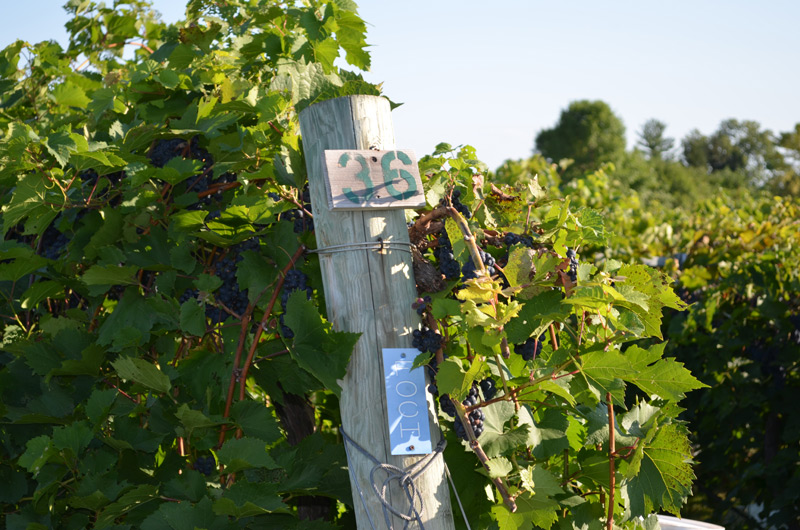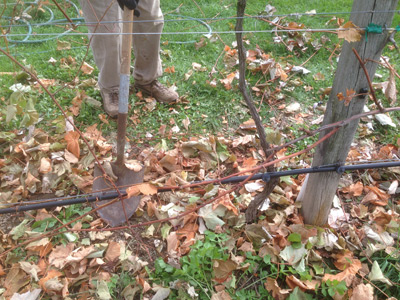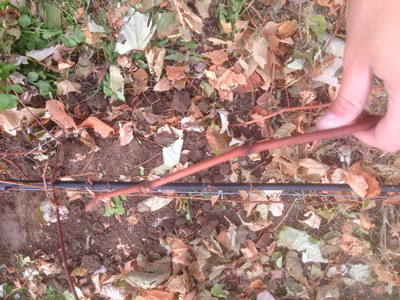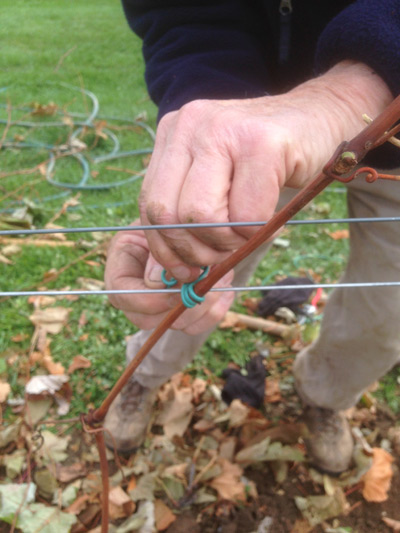In Winemaking on 13 Dec 2013
At a holiday party this week I had the chance to catch up with my Mitchell Vineyard coworkers after a few weeks of post-harvest rest; they’re planning trips to South America and ski expeditions this winter before it’ll be time to get out to the vineyard again in the spring. Over a few really cool homemade wines––especially a bottle of 2009 marquette and 2013 aromella that was still in progress, but already tasting lovely with great muscat character––I realized how much I still had to learn if I want to make great wine in this fascinating location. I also realized how incredibly lucky I’ve been to fall in with these folks, especially Dave Mitchell, and I was inspired to compile an (incomplete) list of what I learned about wine this season.

- Same passion; new grapes. prairie star. lacrescent. millot. While some were familiar to me from my time in New York (frontenac, foch, noiret) and South Africa (muscat), many of the grapes Dave grows are hybrids that I’d never tasted before. My new favorite? Marquette, a grape I experimented with in home winemaking this fall and hope to work with more next year. With its meaty tannins and spice notes, Dave says it’s Wisconsin’s most promising red grape, and home versions from my coworkers have made me really excited about it. Muscat, too, shows promise based on the wines I’ve tasted from Mitchell grapes. Wisconsin, like Niagara USA, is still feeling out what grapes are best for a truly viable wine industry, but the wine industry is much even more of an infancy; finding varietals that will weather its cold winters and short growing season is a challenge.
-
You can start a new vine by burying one cane if at least three buds are underground. I’d never seen this before; Dave walked me through the process and I thought it was cool. Check it out, at left.



- On a related note: viticulture is amazing. I’ve spent a fair amount of time working in vineyards but I’ve never worked a vineyard-centric job in the wine industry. Working at Mitchell and watching customers come with their families and pick out grapes, ask winemaking advice, and come back with wines for Dave to taste, has been fascinating. Winemakers always refer to the vineyard as the place where great wine begins, but this was my first direct experience with it: Dave’s years of effort and tender loving care for his vines are evident and I have a lot to learn from him about avoiding pests and viruses, pruning, and keeping vines safe through a harsh winter. I can’t wait to start a full season in 2014.
- I could listen to cool-climate wine people all day. This wasn’t exactly new information––I’m a little biased after years in the New York wine industry, watching people like Jonathan Oakes and Martin Schulze make ice wine and extolling the virtues of delicate pinot noir and unoaked chardonnay to customers. But hanging out with a group of zinfandel- and malbec-drinking vineyard coworkers and listening to them talk about the flavor characteristics in hybrid grapes most customers have never heard of, and listening to Dave’s stories of burying cabernet franc vines to try to keep them through winter (more on that in a future post), has just confirmed my view that cool-climate winemaking is uniquely challenging and tends to draw people whose sanity is right on the edge. I like that.
- Wisconsin wines deal with the same PR obstacles I’ve seen before. While the New York wine industry is much, much more established and developed than Wisconsin’s, the problems are familiar: customers want big reds and don’t care to get to know delicate, food-friendly wines. Many of the state’s wine journalists don’t appear to actually taste any of the wines before writing them off. And on the other hand, quality is hit or miss, so you can’t blame customers for treading cautiously. What’s needed is more education––on the customers’ end, and on the industry’s end in terms of making a higher quality of wine across the board. That’s gradually coming to the state, and I want to be a part of it.
- A 15-mile bike commute to spend a day in a vineyard? Probably my ideal work environment. On my first day, I thought the hills would kill me, but riding my bike out to the vineyard to spend the day picking grapes, crushing them for customers, and talking home winemaking was the most fun I’ve had in years. Even when it was 95 degrees out (cool climate is cool!), I couldn’t believe I had found such an awesome place to work.
That said, I was grateful for a ride home in Dave’s van most days. I’m not completely infallible.